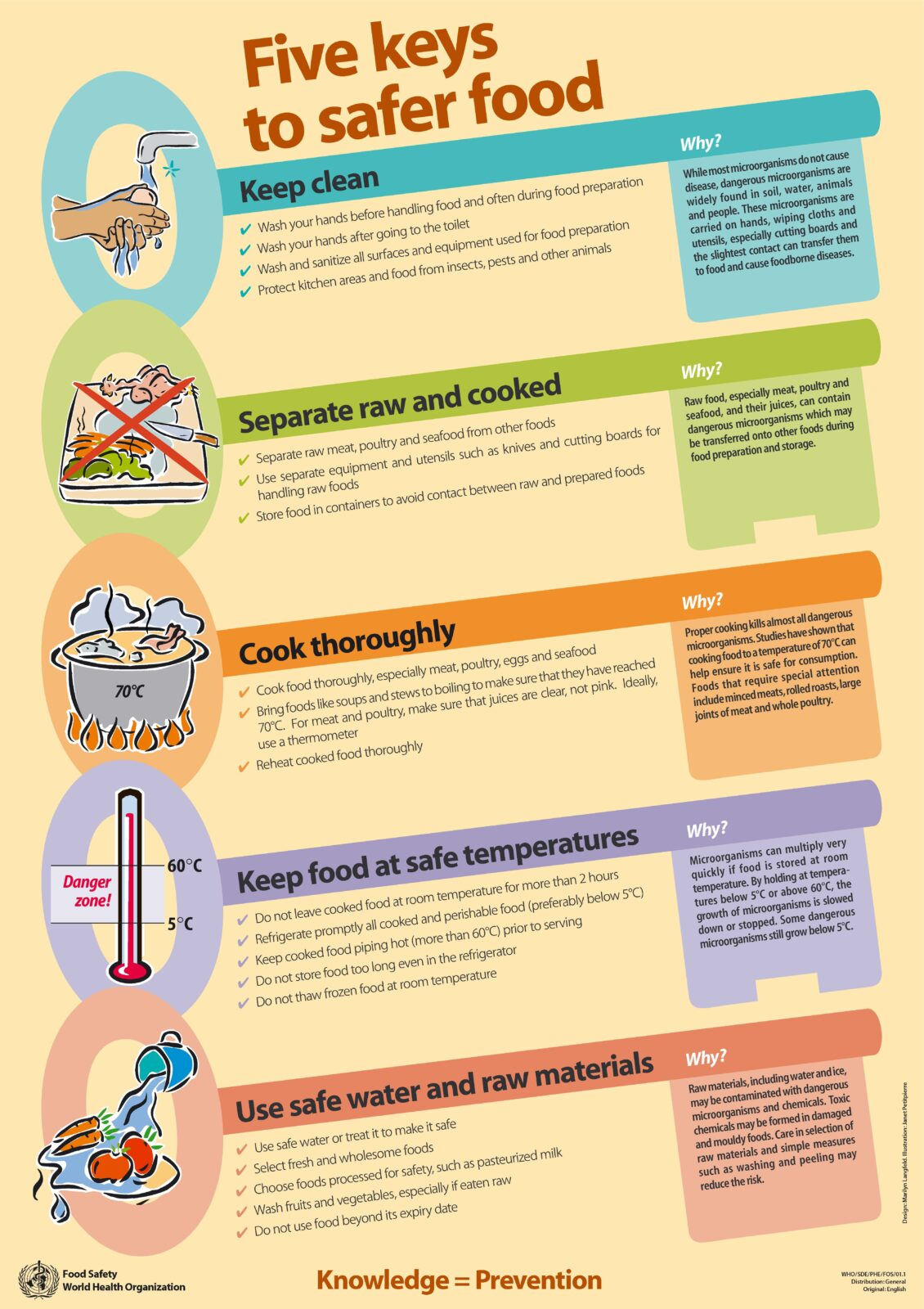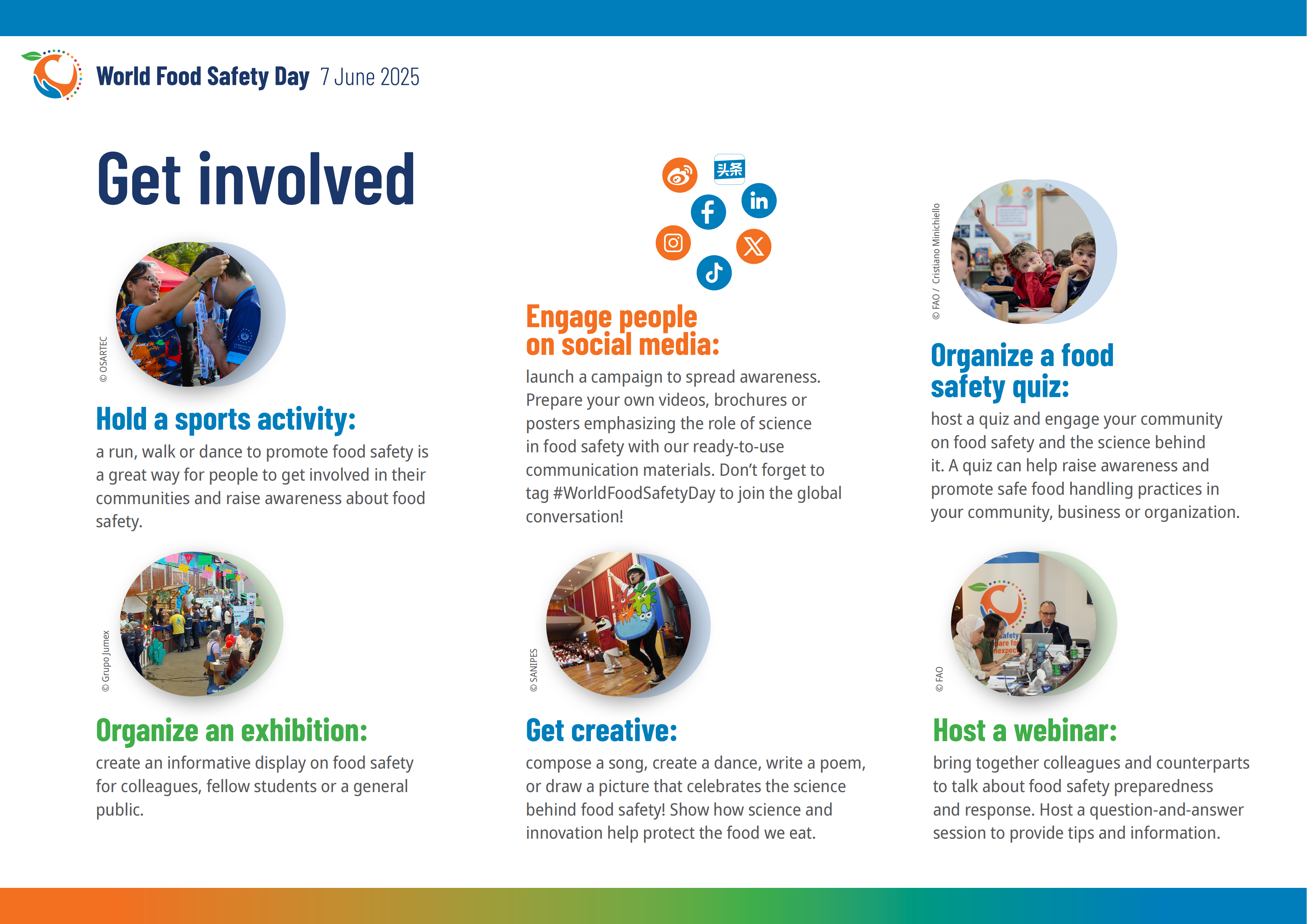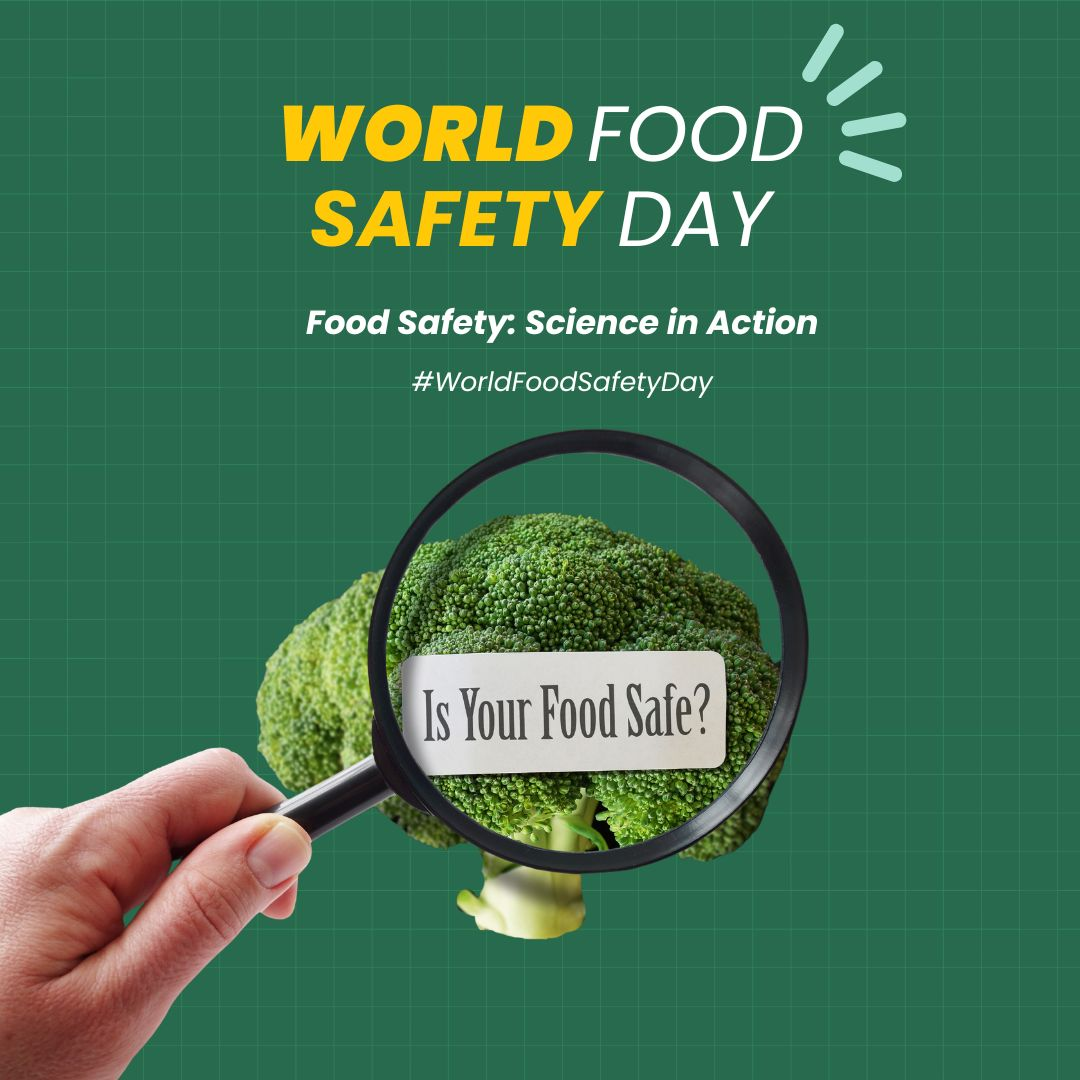_00.png)

Theme Food safety: science in action
WHO and the Food and Agriculture Organization of the United Nations (FAO) jointly facilitate the observance of World Food Safety Day each year on 7 June, working closely with Member States and other stakeholders including civil society, academia, and others.
On this World Food Safety Day, we recognize the essential role of science in ensuring food safety and enabling informed decision-making.
Everyone involved in the food supply chain - from producers, to processors, transporters, retailers, cooks and consumers - relies on the universal application of good practices, agreed processes and standards to keep food safe. These all draw on the careful, clear and thoughtful application of the best available scientific evidencethat explores how and why food can become contaminated and make us sick. Scientists assess and analyse risks to human health associated with known, established, emerging and anticipated food safety hazards, and they provide advice to assist policymakers, food businesses and consumers make safe choices.Without science, it would not be possible to maintain food safety along supply chains, which often span the globe and cross multiple borders. This World Food Safety Day, we are celebrating the important role that science plays in making informed decisions about food.
The Joint FAO/WHO Food Safety Scientific Advice Programme
The joint FAO/WHO Scientific Advice Programme consists of several established and ad hoc bodies, which include:
✅ JECFA:The Joint FAO/WHO Expert Committee on Food Additives was established in 1956 and will hold its 100th meeting this year.
✅JEMRA: The Joint FAO/WHO Expert Meeting on Microbiological Risk Assessment was
established in the year 2000.
✅JMPR:The Joint FAO/WHO Meeting on Pesticides Residues was established in 1963 and is
charged with assessing the risk to human health of pesticide use.
Key messages
v Science is fundamental to food safety
v Food safety is everyone’s business
v There are many scientific disciplines behind food safety.
v Education is key.
v If it is not safe, it is not food.
v There is no science without data.
v Everyone is a risk manager.
Facts and stats
600 million people fall ill each year from foodborne disease. The annual cost of treating foodborne illnesses is estimated at USD 15 billion.
The economic burden of foodborne diseases exceeds USD 110 billion annually in low- and middle-income countries due to lost productivity and healthcare expenses.
Bacteria that are resistant to antimicrobials can be found in food. Agriculture and livestock communities need to be vigilant about prudent antimicrobial use, so that resistant pathogens cannot be passed on to humans through food.
Certain hazards are not static and can multiply in food: they are living microorganisms. We cannot see them, but they can move, they multiply; animals can carry them and so can humans, they can be found everywhere, at any time. Science helps us understand the conditions that manage and mitigate the risks these microorganisms may pose to humans.
Some chemical compounds may pose specific risks when humans are exposed to them at low levels over a long time. Scientists have developed risk assessment methods to estimate how to keep us safe even when we are exposed to these chemicals during our lives.
Avoid the danger zone! Bacteria generally grow rapidly between temperatures of 5°C (41°F) and 60°C (140°F), a range commonly known as the ‘danger zone.’ To reduce the risk of contamination, perishable foods should be kept either refrigerated (below 5°C) or cooked to temperatures above 70°C.
What can you do?
Science provides the basis for food safety guidance, but preventing foodborne illness depends on all of us taking the right actions.
Governments can:
Ø Invest in research and support scientists.
Ø Develop science-based policies.
Ø Invest in data collection.
Ø Promote science education.
Food businesses can:
Ø Implement evidence-based programmes.
Ø Reinforce food safety practices.
Ø Support data collection efforts.
Consumers can:
Ø Practice safe handling using evidence-based practices at home. Following the five keys to safe food reduces the risk of foodborne illnesses.

Ø Stay informed by keeping up to date on food safety advice from national authorities.
Academics can:
Ø Conduct and share research on food safety.
Ø Provide education and training.
Schools can:
Ø Teach food safety basics.
Ø Make food safety fun!
Ø Encourage an interest in science.

Join the movement: [Link to WHO campaign page]

Source:WHO[https://www.who.int/]



